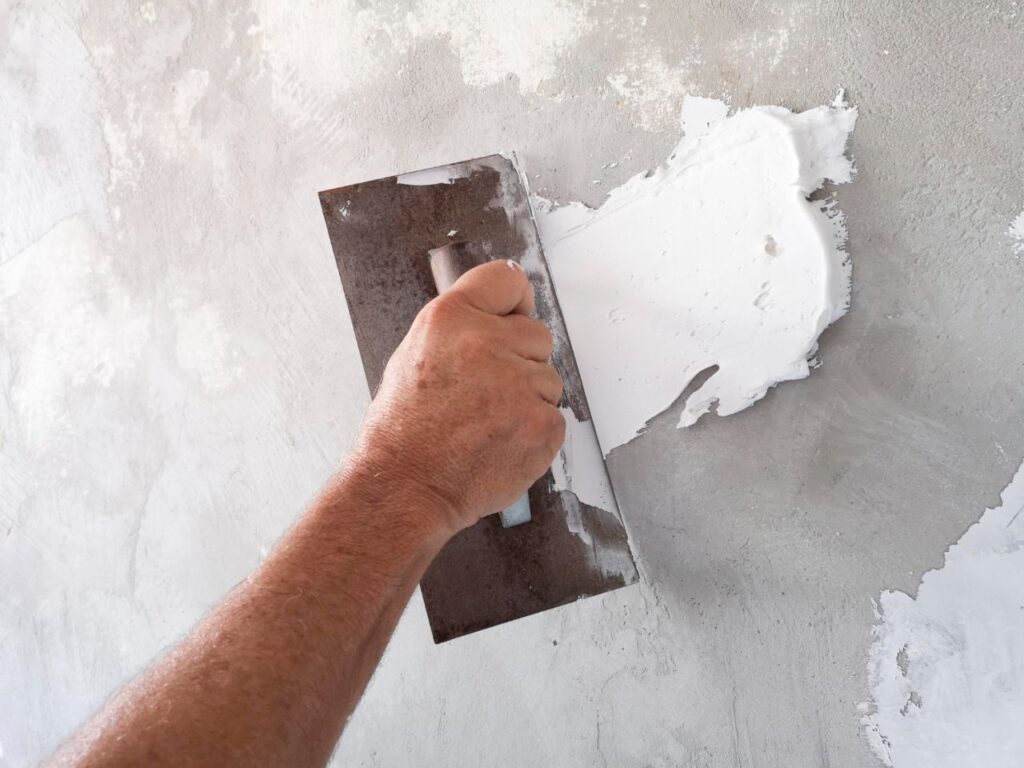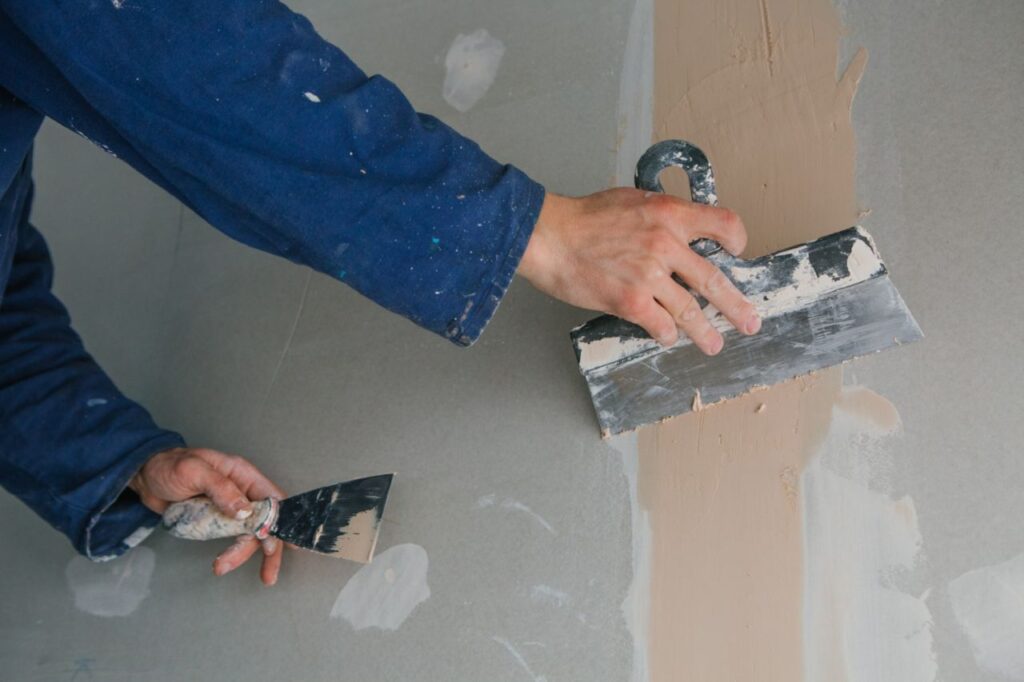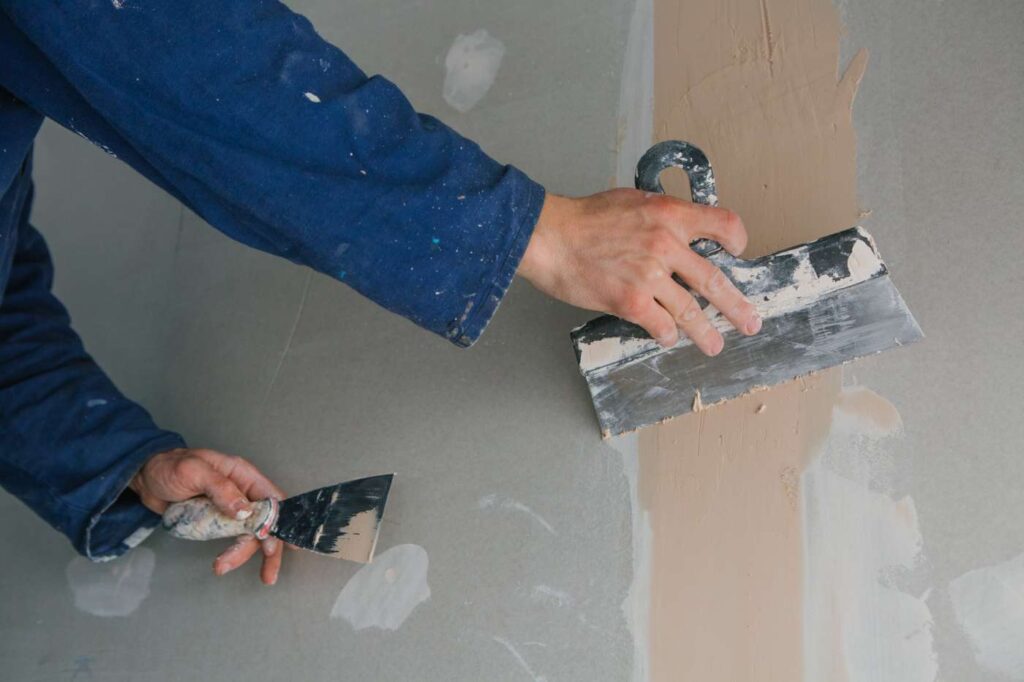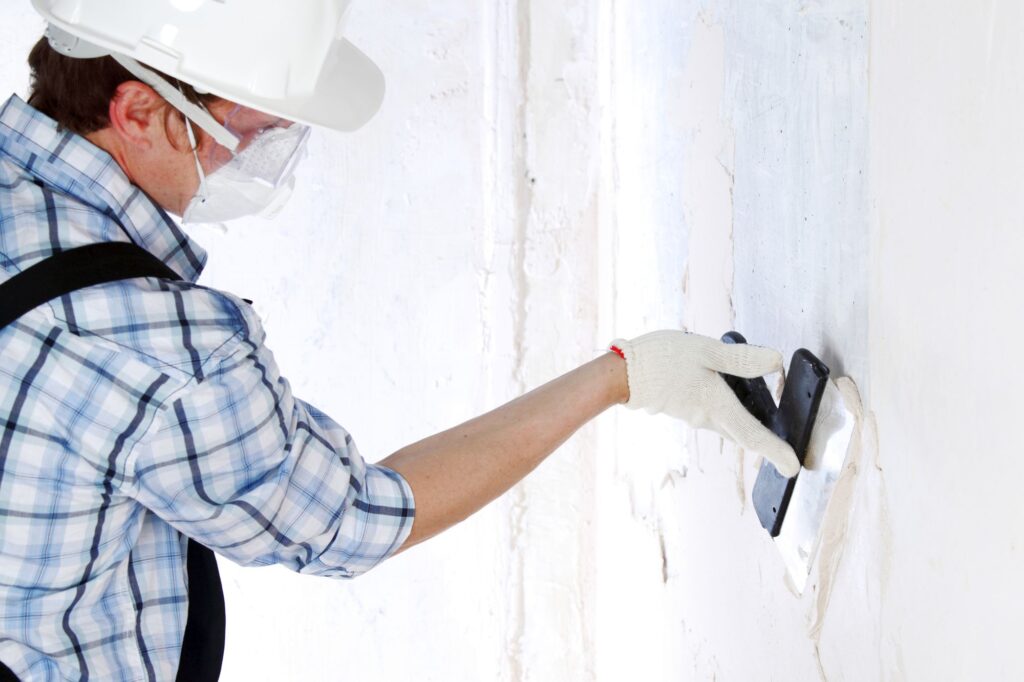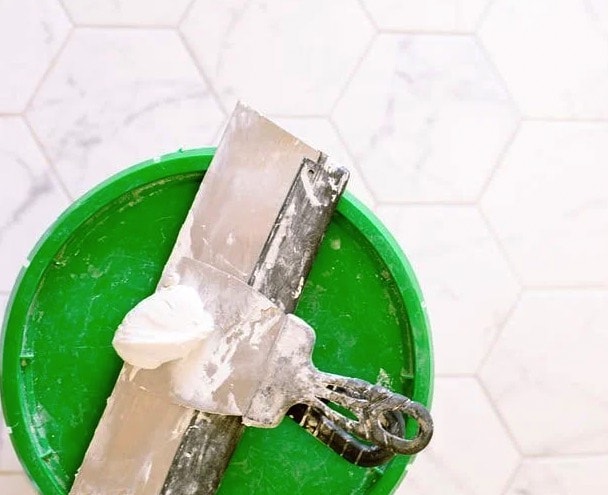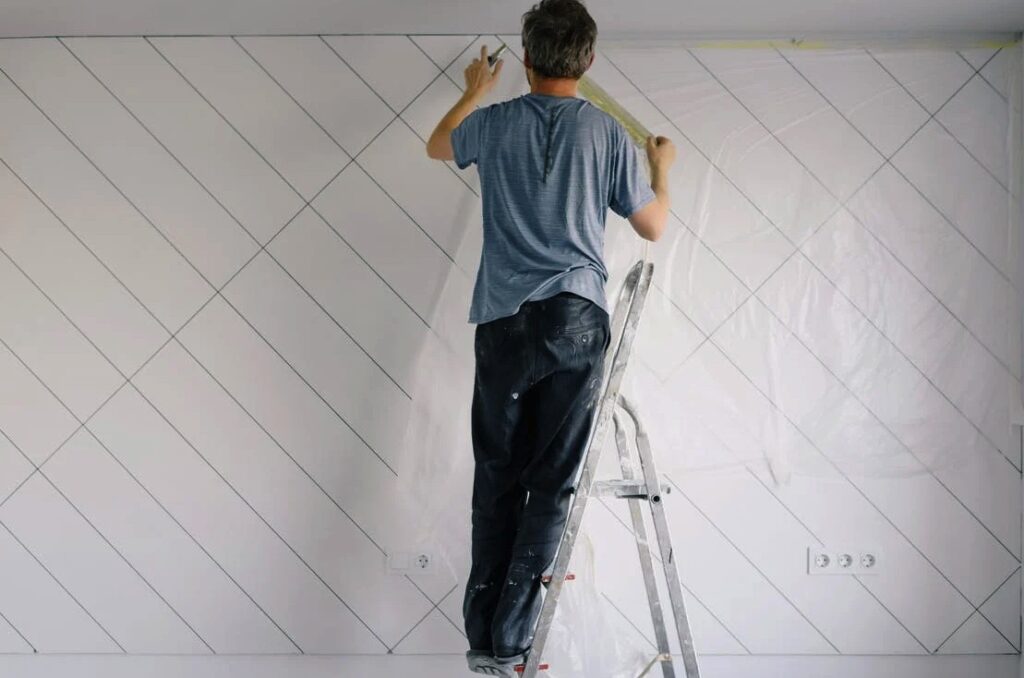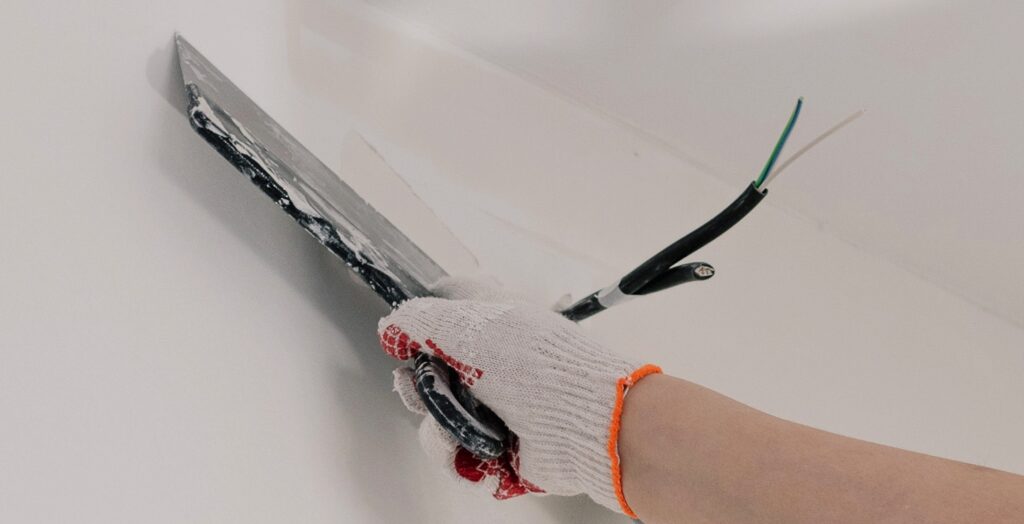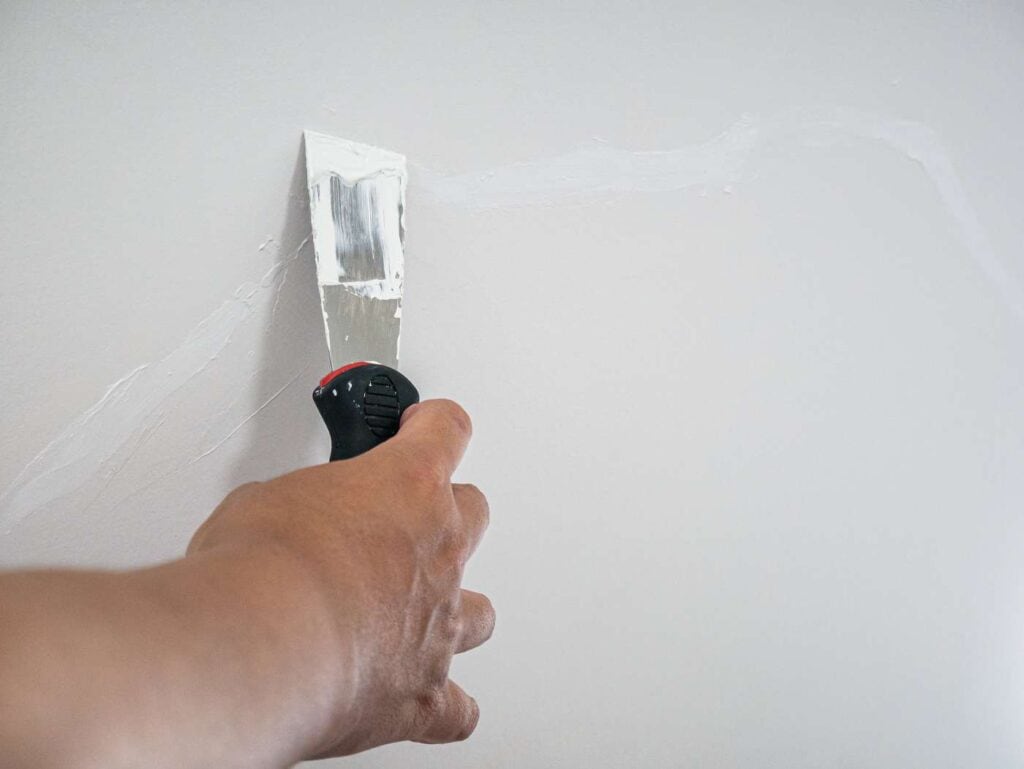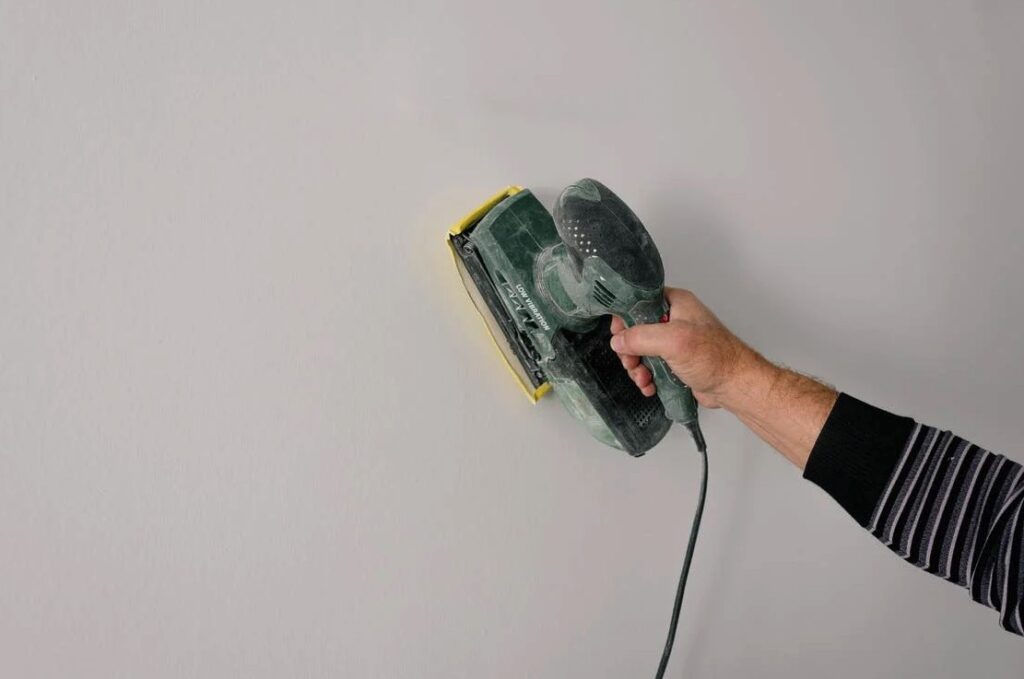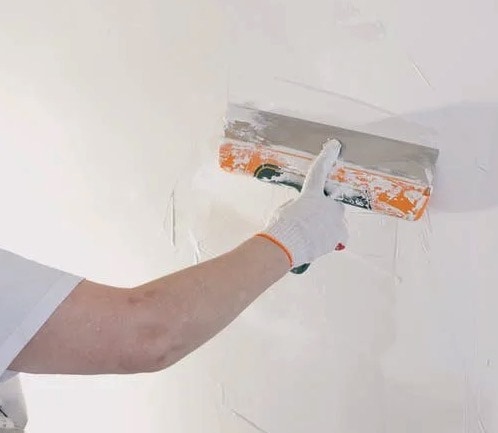When you saw a well-plastered wall's flawless finish, have you ever thought, "I could turn this skill into a business"? You're not alone, though! Plastering is an amazing company to start, but where do you even start? What actions will put you on the successful path? We'll review all the important details in our guide to starting a plastering business and making your hobby a successful venture.
Thanks to their many years in the field, an expert plasterer has perfected the technique of making walls look like works of art. Sachin has been plastering for over ten years, and his story demonstrates how important it is to pay close attention to detail if you want to be successful. We will condense Sachin's wisdom into three lines you may use immediately. If you want to start a plastering business from scratch and succeed, this article is a great place to start. It covers everything from improving your abilities to advertising your services.
Wait, that's not even the start! Going beyond the surface level, we provide an in-depth look into the plastering industry and what it takes to succeed. Delving into each phase will give you insightful knowledge and actionable advice to propel you towards success. Are you prepared to stand out in the plastering field? The world of plastering business is ours to explore.
Will A Plasterer Be Able To Start Their Own Company?
Need some advice on how to launch your own plastering business? While this is a common predicament for would-be plaster business entrepreneurs, it should not be a crippling obstacle. You need to know what talents are required, what actions to follow, and how to execute growth tactics to become your boss and establish a profitable plastering business. Fortunately, there are only a few stages involved.
Tasks And Duties
Plastering entails several detailed steps, starting with measuring and cutting plasterboard precisely. After being made to measure, these panels are placed and fastened to walls and ceilings in an organized manner to provide the base for the plastering project. Beads on corners are also carefully prepared and fastened, which adds to the plastered surfaces' structural stability. The installation goes beyond simple use; it includes the detailed application of panel mouldings, cornices, ceiling centres, and various other plaster fixtures, giving the room a stylish and sophisticated architectural touch.
In the next steps of plaster application, trained craftspeople use trowels to distribute plaster, render, and cement evenly over the surfaces that have been prepared. Plaster layers are meticulously levelled and smoothed as part of the procedure to provide a glossy and sophisticated look. To get a perfect finish, we use a combination of sandpaper, sealing compounds, and plaster to carefully cover and smooth over flaws like nail holes and joints.
Plasterwork is at its pinnacle of artistry when finishing coatings are applied, allowing experienced artisans to incorporate decorative effects that enhance the final product's aesthetic appeal. Plasterwork enhances its practicality by integrating fireproofing, acoustic, and insulating materials into its structure, all bonded seamlessly with the plaster. Under this integration, the structural integrity of the surfaces is fortified, and the overall security and comfort of the area are improved. At its core, plasterwork constitutes an all-encompassing and intricate procedure that harmoniously combines artistic ingenuity with technical accuracy to metamorphose areas into sophisticated and practical masterpieces.
Research
Before launching a business, conducting an adequate investigation will guarantee that all necessary components are in place. Recognising the apparatus and tools required to launch a plastering enterprise and the associated costs is an excellent way to begin.
Additionally, choosing a provider that will give you all the essential tools and supplies you need for any task would be best. Second, consider the kinds of fixtures—like cars—you'll require to run your company. Furthermore, it would be best if you researched to identify the greatest offers to maximise your company's revenue.
Location
When deciding where to set up a shop, being selective is critical. This will impact your ability to service certain types of clients.
FAQs About Plastering Business
Starting a plastering business involves several steps. First, you should acquire the necessary skills and training in plastering. Next, register your business, obtain any required licenses or permits, and choose a business structure. Secure the essential tools and equipment, set your pricing, and create a business plan. Finally, market your services and start building your client base.
To run a successful plastering business, you'll need a variety of tools and equipment, including trowels, mixers, plasterboard, plaster, scaffolding, safety gear, and a reliable transportation method for your equipment. The specific tools you need may vary depending on the type of plastering work you plan to undertake.
To attract customers, start by creating an online presence through a website and social media profiles. Utilize platforms like Google My Business to improve your local search visibility. Network with contractors, builders, and real estate agents who may refer clients to you. Consider offering promotional deals to your first customers to build your reputation and gather testimonials.
Insurance is crucial for a plastering business. You should consider getting general liability insurance, which covers accidents or injuries on the job site, as well as professional liability insurance to protect against errors or omissions in your work. Workers' compensation insurance is also essential if you hire employees. Consult with an insurance agent to determine the right coverage for your specific needs.
Pricing your plastering services can be a challenge. Consider factors such as the type of plastering work, materials used, labor costs, and your competitors' prices. You can use a cost-plus pricing model, where you add a markup to your expenses, or research the market to set competitive rates. Be transparent with your clients about your pricing structure and any additional charges that may apply, such as for extra materials or unforeseen complications.
Create a Business Plan for Plastering
Success is frequently the result of meticulous preparation. A formal business strategy should be drafted using your study as its basis. Potentially included in this are:
- Marketing strategy
- Business structure
- Competition
- Target market
- Business objectives and goals
If you need to prepare to create a business plan on your own, you may always hire an accountant or lawyer to help you. Maintaining a regular schedule of reviewing and revising your business strategy is essential.
Determine Your Business Name
Choosing a name for your company is the next step. You may see if the name you've picked for your company is available. After checking availability, you may secure the exclusive right to use your chosen business name in Australia by registering it as a trademark.
Choosing The Right Platform For Your Company
You need to decide on a business structure before you can develop your company's strategy. Imagine yourself in the part you wish to portray.
- A "sole trader" is an entrepreneur whose name appears on the company's paperwork.
- When two or more people decide to go into business together, they are called a partnership.
- Creating a corporation is one way to achieve the goal of legally separating your personal life from your professional life that you have set up for yourself.
Think about the structure that will best serve your company's objectives. Understanding the legal implications of each structure and how they may impact your business operations is crucial.
Source Insurance
Before you do anything else when starting a business, have insurance. Preventing legal action against yourself and your company is of the utmost importance if any of your employees or clients get hurt while on the job or at home; having public liability insurance can protect you and your company.
Your property and workers can be safeguarded from harm with public liability insurance offered by insurance firms. Also, make sure you have worker's compensation insurance ready for when these things happen. At last, you must ensure that all of your equipment is protected from loss, damage, or theft by obtaining appropriate insurance.
Hire Employees
It is wise to add staff to assist with day-to-day operations as your business expands. Another set of choices is deciding how many employees you want to hire and what kind of jobs they will have. How dedicated are they to staying with the company? Hours each week: full, part, or casual?
After that, you'll need to get the necessary employment contracts drafted and signed. You can employ a wide variety of workers.
What Are The Requirements For A Plasterer?
The installation or restoration of interior and exterior walls and ceilings is a crucial component of any construction project, whether a new build or a rehabilitation. When building anything, plastering is crucial since it affects so many different aspects, such as:
- Structural integrity
- Aesthetic appearance of the finish
- Safety standards
- The building’s insulation
The ability to plan out the cutting and installation of materials, as well as to carry out the work and, if necessary, perform maintenance, are all essential skills for a plasterer. Seek an apprenticeship in solid plastering to make a living as a plasterer. This is an option to consider after finishing high school, or at any age for apprentices already in their twilight years.
Some plasterers have learned the trade through on-the-job training, but formal training is required to get the necessary qualifications, licences, and insurance. There are two main categories of plastering abilities:
- Plaster mixes are applied when wet or "plastic," known as wet or solid plastering. Although different tools can be utilised, a trowel is the most common for applying wet plaster.
- The process of applying solid plaster goods, such as sheets and mouldings, is known as dry plastering.
Gaining licensure and insurance as a plaster requires formal education in solid plastering and extensive experience and self-assurance in the building trades. Once you have mastered the basics, you can specialise in whatever plastering area you choose. Plastering, like any other occupation, gives its practitioners the freedom to develop their skills in a way that plays to their individual interests and talents.
Plasterers can broaden their employment by specialising in certain parts of plasterwork beyond initial construction after their abilities are adequately developed via training and experience with various assignments.
Plasterers are versatile and can find employment in a wide range of non-construction-related fields, including modelling, maintenance, and manufacturing. Here are a few examples of the various forms of expertise:
Plasterboard Fixer
You can only go into a business or residential building after first seeing the work of a fixer, a plasterer who focuses on the dry application of plasterboard sheets and cornices. It is the outside covering of the interior and plays a significant role in attaining a luxurious look.
Wet Plasterer
Solid plasterers, or wet plasterers, use wet solutions to render panels. You can use a wet combination of lime, sand, water, or cement for this. Once applied, the moist solution takes some time to dry and solidify.
Modeller’s Hand
As a modeller's hand, you excel in casting plaster models. Understanding the characteristics of plaster construction is necessary for the production of these moulds in factories. To become competent and trained to the point that they can consistently produce a high-quality finish, plasterers, like workers in any other craft, rely on a combination of on-the-job training and formal education.
Suppose you want to ensure everyone on the job site is safe; getting a licence and insurance is necessary. Common responsibilities and activities of a plasterer include:
- Finish the installation by joining the insulating, fireproofing, and acoustic components with plaster.
- Finish the plaster with ornamental touches and install pre-fixed panel mouldings or fittings.
- Plasterboard installation includes measuring, cutting, placing, and connecting panels to walls, ceilings, and other surfaces.
- Prepare the plaster and cement, then use various tools and equipment to apply coatings to the walls and ceilings.
- Organise the placement of insulation and barriers and set up corner sections and plasterboard.
- Carry and unload products and safely handle a range of tools and equipment.
- Use wet plaster and sealants to level and straighten angles, walls, corners, and ceiling surfaces; conceal nail holes and junctions; and smooth out uneven regions.
Specific Skills that make you a good Plasterer:
- Organisational Skills
- Time Management
- Physical Labour
- Problem-Solving Abilities
- Attention to Detail
Conclusion
Starting a plastering business can be a rewarding venture, but it requires careful planning and execution. Expert plasterer Sachin has over ten years of experience in the field, emphasizing the importance of attention to detail. This guide provides an in-depth look into the plastering industry and its stages, including tasks, duties, research, location, and creating a business plan.
Plastering involves several steps, including measuring and cutting plasterboard, applying plaster, rendering, and cement, and leveling and smoothing surfaces. The process also includes applying finishing coatings, incorporating fireproofing, acoustic, and insulating materials, and integrating fireproofing, acoustic, and insulating materials.
Research is crucial before launching a plastering business, ensuring all necessary components are in place and choosing a provider that provides necessary tools and supplies. Selecting the right location for your shop will impact your ability to serve specific types of clients.
Creating a formal business plan, including marketing strategy, business structure, competition, target market, and business objectives and goals, is essential for success. If you need help creating a business plan, consider hiring an accountant or lawyer to assist you.
Determining your business name is another important step, as it allows you to secure exclusive rights to use your chosen name in Australia by registering it as a trademark. Finally, choosing the right platform for your company is essential for achieving your business objectives. Understanding the legal implications of each structure and how they may impact your operations is crucial for success in the plastering industry.
When starting a business, it is crucial to have insurance to protect yourself and your company from legal action. Public liability insurance can protect your property and workers, while worker's compensation insurance ensures equipment is protected from loss, damage, or theft.
Hiring employees is essential for day-to-day operations and determining the number of employees and their roles. Plasterers are required to install or restore interior and exterior walls and ceilings, which affects structural integrity, aesthetic appearance, safety standards, and building insulation. They can specialize in wet or dry plastering, using a trowel for wet plastering and a combination of lime, sand, water, or cement for dry plastering.
Plasterers can specialize in various non-construction-related fields, such as plasterboard fixing, wet plastering, and modeller's hand. They can also specialize in modelling, maintenance, and manufacturing. Common responsibilities include finishing the installation, applying coatings, organizing insulation and barriers, carrying and unloading products, and using wet plaster and sealants to level and straighten surfaces.
Specific skills that make a good plasterer include organizational skills, time management, physical labor, problem-solving abilities, and attention to detail. Obtaining a license and insurance is necessary to ensure safety on the job site and ensure the safety of all parties involved.
Content Summary
- Embarking on a plastering business journey requires a passion for transforming walls into works of art.
- Sachin, a seasoned plasterer with over ten years of experience, shares invaluable insights for success in the plastering industry.
- Starting a plastering business involves a comprehensive guide covering skill improvement, advertising strategies, and business setup.
- The plastering industry, with its intricate techniques, is explored in-depth, providing actionable advice for aspiring entrepreneurs.
- Essential talents, actions, and growth tactics are outlined to help individuals establish a successful plastering business.
- Plastering tasks involve measuring, cutting, and precisely placing plasterboard panels for a stable base.
- Detailed preparation of corner beads adds structural stability to plastered surfaces, showcasing craftsmanship in the plastering process.
- Craftsmen use trowels to evenly distribute plaster, rendering a glossy and sophisticated finish to walls and ceilings.
- The final stages of plaster application involve skilled artisans incorporating decorative effects for enhanced aesthetic appeal.
- Plasterwork integrates fireproofing, acoustic materials, and insulation, fortifying structural integrity for improved safety and comfort.
- A thorough investigation is crucial before starting a plastering business, covering necessary tools, costs, and supplier considerations.
- Strategic location selection impacts the ability to service specific client types in the plastering business.
- Meticulous preparation, including a formal business plan, is key to achieving success in the plastering industry.
- Business plans encompass marketing strategies, business structure, competition analysis, target market, and business goals.
- Choosing a unique and available business name is a crucial step, followed by registration for exclusive use.
- Deciding on a business structure, whether sole trader, partnership, or corporation, requires careful consideration of objectives and legal implications.
- Obtaining insurance, including public liability and worker's compensation, is vital for legal protection in a plastering business.
- As the business expands, hiring employees becomes essential, with considerations for job roles, dedication, and employment contracts.
- Plasterers play a crucial role in construction, impacting structural integrity, aesthetic appearance, safety, and insulation of buildings.
- Formal education and on-the-job training are necessary for plasterers to acquire qualifications, licences, and insurance.
- Plasterers possess versatile skills, allowing them to specialise in various areas such as modelling, maintenance, and manufacturing.
- Plasterboard fixers focus on the dry application of plasterboard sheets and cornices, contributing to the luxurious appearance of interiors.
- Wet plasterers use lime, sand, water, or cement to render panels, creating a glossy and sophisticated finish.
- Modellers' hands excel in casting plaster models, requiring a combination of on-the-job training and formal education.
- Licensure and insurance are essential for ensuring safety on the job site, with responsibilities including finishing installations and applying coatings.
- Plasterboard installation involves measuring, cutting, placing, and connecting panels to various surfaces, showcasing precision and skill.
- Plasterers are responsible for preparing and applying plaster and cement, concealing imperfections, and smoothing surfaces for a flawless finish.
- Organisational skills are crucial for plasterers to efficiently carry out tasks, from measuring and cutting to applying coatings and finishing installations.
- Time management is a key skill for plasterers, ensuring timely completion of projects and meeting client expectations.
- Physical labour is an integral part of a plasterer's role, involving the handling of tools, materials, and equipment to execute tasks.
- Problem-solving abilities enable plasterers to address challenges in installation, application, and finishing to achieve high-quality results.
- Attention to detail is paramount in plastering, ensuring precise measurements, seamless applications, and flawless finishes.
- Success in plastering requires a combination of artistic creativity and technical accuracy to transform spaces into practical masterpieces.
- Plasterers contribute to the overall security and comfort of a space by integrating fireproofing, acoustic, and insulating materials seamlessly.
- Apprenticeships in solid plastering offer a pathway to becoming a skilled plasterer, providing essential skills for construction projects.
- Plasterers with formal education and extensive experience can specialise in specific areas of plasterwork, broadening their employment opportunities.
- Versatility allows plasterers to find employment in non-construction fields, including modelling, maintenance, and manufacturing.
- Plasterers exhibit craftsmanship by meticulously applying wet or solid plaster, using various tools to achieve a perfect finish.
- Decorative effects added during plasterwork enhance the aesthetic appeal of the final product, showcasing the artistry involved.
- Plasterers must ensure the proper application of insulation and barriers, along with the installation of corner sections and plasterboard.
- Safely handling tools and equipment, unloading products, and organising workspaces are part of a plasterer's daily activities.
- Plasterers use wet plaster and sealants to level surfaces, conceal imperfections, and create smooth and even finishes.
- Organisational skills come into play as plasterers coordinate the placement of insulation and barriers for optimal functionality.
- Time management is crucial for plasterers to efficiently carry out tasks, ensuring projects are completed within the designated timeframe.
- Physical labour is a significant aspect of plastering, involving the safe handling of tools, materials, and equipment to achieve desired results.
- Problem-solving abilities enable plasterers to address challenges during installation, application, and finishing processes.
- Attention to detail is a hallmark of a skilled plasterer, ensuring precision in measurements and achieving flawless finishes.
- Modellers' hands exhibit expertise in casting plaster models, requiring a combination of on-the-job training and formal education.
- Licensure and insurance are essential for plasterers to ensure safety on job sites, protecting both employees and clients.
- Plasterers contribute to the transformation of spaces into sophisticated masterpieces, combining artistic creativity with technical accuracy.
